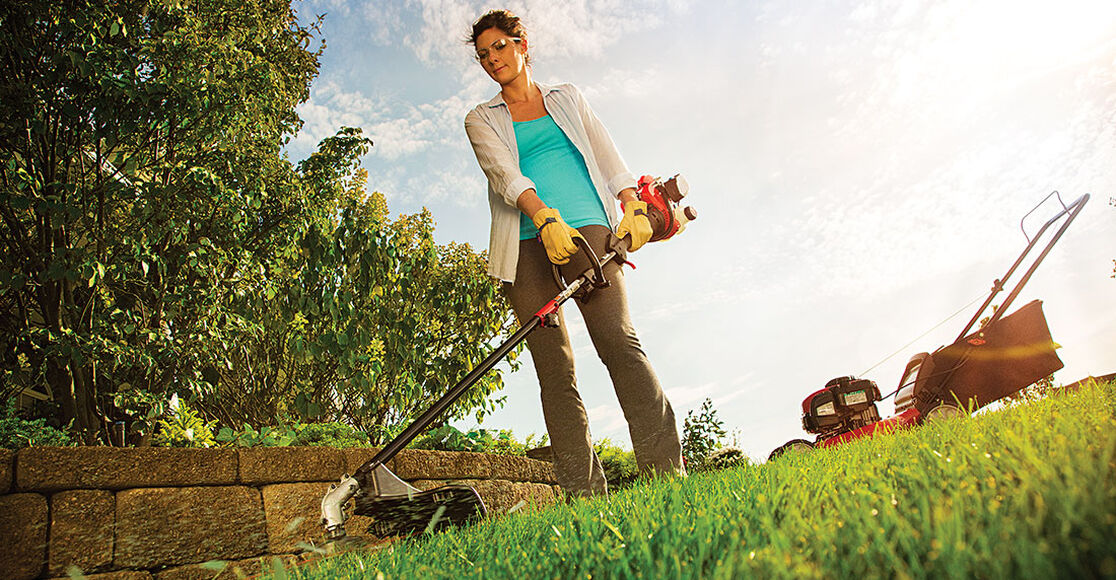String trimmers are key for keeping your lawn neat, polished, and looking just the way you want all summer long. For yard tasks like tidying up your walkways, under a deck or along a fence, your string trimmer will be your go-to tool. Keep in mind there are different types of string trimmer models - 2-cycle and 4-cycle - so make sure you understand which type of string trimmer will fit your needs best and learn how it works before getting out in the yard.
It's also important to take the design of your trimmer into account, as straight shaft and curved shaft trimmers have varying capabilities and are used for different purposes in the yard.
Straight shaft string trimmers like the TB35 EC Straight Shaft String Trimmer, are more comfortable for taller individuals to use, and ideal for trimming around fencing and other hard-to-reach places in the yard.
Lighter in weight, curved shaft trimmers, such as the TB22 EC Curved Shaft String Trimmer, are ideal for shorter people and for projects that take more time to complete - like trimming sidewalks and areas within your landscape.
To get started, here are some operation and maintenance tips to consider so you can stay safe and be more efficient with your string trimmer.
Safety Tips
- Make sure your yard is free of debris, toys and any other foreign yard objects before you start your trimmer. When a powered-on trimmer encounters an object, it will be unexpectedly and aggressively thrown. You'll also want to make sure pets and bystanders are at least 50 feet away.
- Always follow safety precautions when operating a string trimmer (wear gloves, safety goggles, closed-toe shoes, etc.). Find a list of safety protocols in your owner's manual.
- Before starting your machine, make sure it is in proper condition (tool is clean, no loose screws or bolts, etc.). Don't forget to check the fuel level and refill if low.
- When using a trimmer, make sure your weight is evenly distributed on both feet, on solid ground, with both hands are firmly holding the machine's handles.
- Following each trimming job, use a dry, clean brush to clear your trimmer of any remaining grass clippings and dirt.
- Always allow plenty of time for your string trimmer to cool down before storing it in a dry place. If you are storing it for a long period of time, be sure to empty the machine of all fuel.
Operation Tips
- Learn how to use the type of line feed system on your trimmer. Bump feeds offer simple, hands-free operation, requiring just a tap of the trimmer to release additional line at full throttle. A fixed line system is easy to refill with line, with no winding required - just simply install pre-cut line as needed.
- Add ease to starting your trimmer with useful tools like the JumpStart' Engine Starter that simply attaches to the back of your JumpStart-capable trimmer, eliminating the task of pull starting.
- If you're cutting thick, tall grass and weeds, tackle in small sections. Trying to trim too much at once can cause the trimmer to stall or the line may start to tangle - it can even strain the engine. For taller grass, you should trim from the top down in small sections.
- Transform your trimmer to complete other yard projects like blowing leaves, edging the lawn and cultivating the garden with TrimmerPlus® attachments. By using attachment-capable trimmers, you can easily complete multiple tasks with one tool.
- Run your machine on low power when trimming decorative plants and trees. Full-powered trimmers are more difficult to control and can damage delicate plants, as well as items like fences and sprinkler systems.
